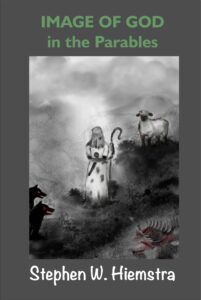Applying Love

Know therefore that the LORD your God is God,
the faithful God who keeps covenant
and steadfast love with those who love him
and keep his commandments, to a thousand generations,
and repays to their face those who hate him,
by destroying them.
(Deut 7:9-10)
By Stephen W. Hiemstra
In the parables examined, we begin to see the many facets of God’s love.
Jesus introduces the Parable of the Good Samaritan to address the problem with interpreting God’s love. When the Samaritan stops to attend to the wounds of the man beaten by robbers, it is an example presumably of offering love to an enemy, because the man beaten is presumed to have been a Jew and Jews hated Samaritans (Matt 5:43-46). More than this, there is also an echo of the story of Cain and Abel (Gen 4) in the parable because Samaritans and Jews can be thought of as estranged brothers—the Northern and Southern Kingdoms of Israel—who have been reunited in love (1 Kgs 12). The parable thus offers love as an allegorical reconciliation of the long-divided, Davidic Kingdom.
If the Parable of the Good Samaritan shows love as a conduit to reconciliation, the Parable of the Two Brothers displays love as a catalyst for adolescent growth and maturity in a context reminiscent of God’s request of Abraham: “Go from your country and your kindred and your father’s house to the land that I will show you.” (Gen. 12:1). This reality of God’s love is captured in the adage: God don’t so much care what you do as the person you become. Where we might see criminal justice, God is more interested in restorative justice where, like Jesus with the woman caught in adultery, focused on the person she could be, not the person she had been (John 8:10-11).
Note that in these two parables, love is not a static description of adoration so much as a dynamic strategy for growth, reconciliation, and restoration. Furthermore, the love of the father for the prodigal son multiples the love than the son displays. This is not a transactional love between two narcissists, but a transformative love that, like the Parable of the Friend at Midnight and enemy love, which comes at a cost and is never convenient. Getting out of bed at midnight to offer hospitality to a neighbor in need is never convenient. One never counts one’s change with family and friends, and it is best not to grumble about it.
The reckless love of the Shepherd for the Lost Sheep is most meaningful when we realize that we are all lost sheep. The dichotomous world of good and bad fish illustrated in the Parable of the Dragnet highlights the cost of such reckless love and serves to shock us out of complacency. Do we turn to God in our pain or sulk in our grief? Over time Gethsemane moments move from a decision, to a habit, to a lifestyle and define the person we become and the culture we engender. The reckless love of God more than the threat of judgment gives us a reason to turn to God in our pain.
In Christ, love is an open-handed affection with an eye on the future.
Applying Love
Also see:
The Face of God in the Parables
The Who Question
Preface to a Life in Tension
Other ways to engage online:
Author site: http://www.StephenWHiemstra.net
Publisher site: http://www.T2Pneuma.com
Newsletter at: https://bit.ly/Janu_25, Signup
The post Applying Love appeared first on T2Pneuma.net.



